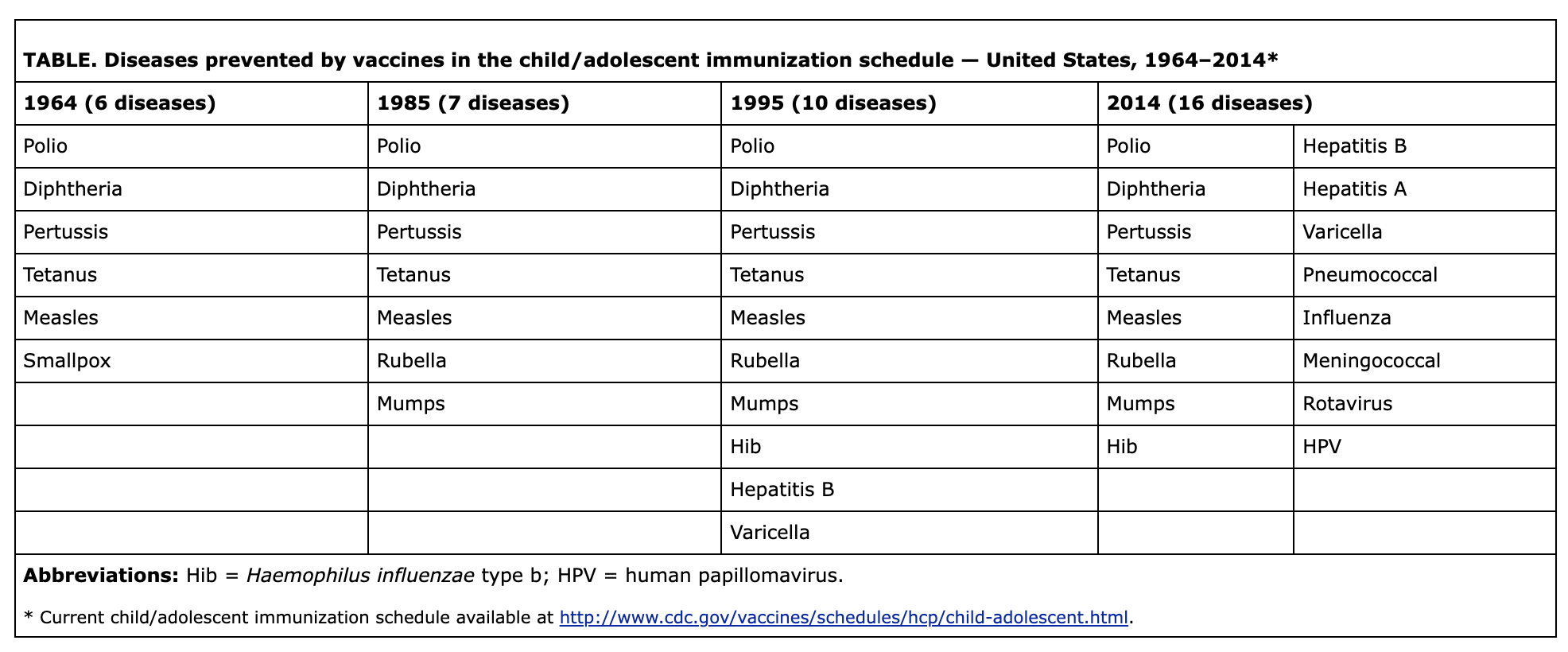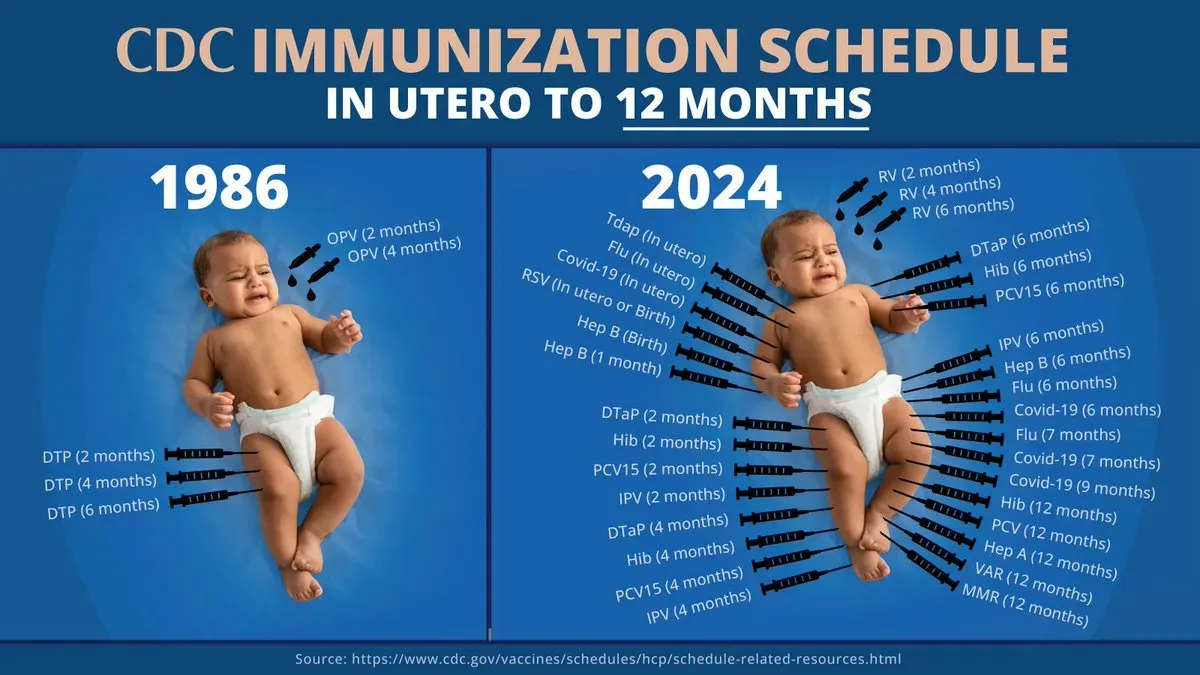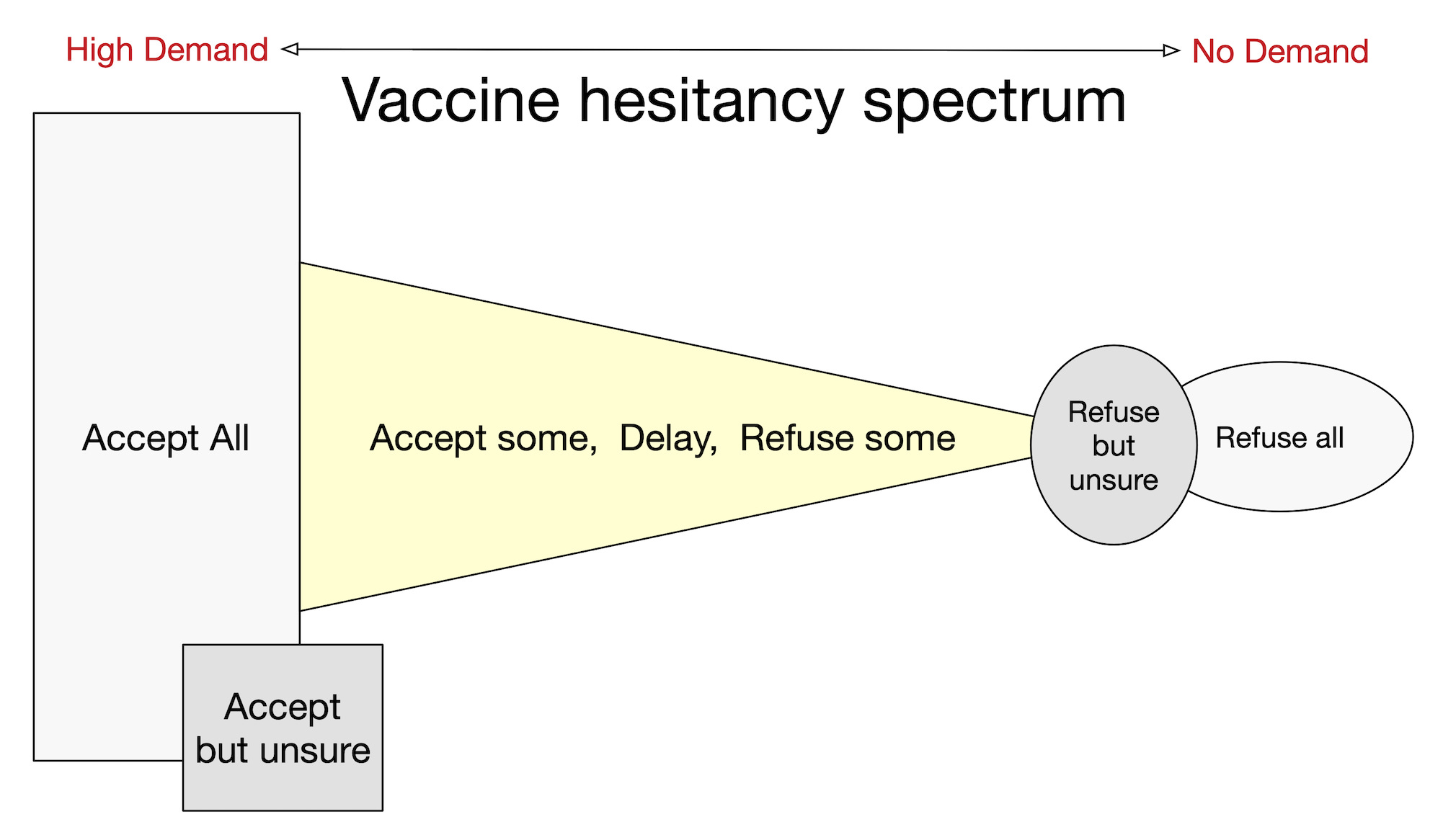Doctors often prefer combination vaccines, which deliver multiple vaccinations in a single shot. For parents, this means fewer office visits.
But is this the best option for your child?
In 2011, employees of a major vaccine manufacturer published a paper that listed what they believe to be the benefits of combination vaccines:
- allows incorporation of new vaccines into immunization schedules (sell more)
- reduced administration and storage costs (cheaper for the doctor)
- higher rates of compliance with complex vaccination schedules (sell more and easier for the doctor)
Clearly, none of these are benefits for you or your child.
The authors even go so far to state that safety is not a benefit; in fact, safety is the main challenge because it is safer to administer the vaccines separately.
A personal example: while discussing our desire to space out individual vaccines, our pediatrician told us that the practice discontinued use of a combo vaccine (MMR + chicken pox) because it was causing significantly more high fevers and febrile seizures than the administration of those two vaccines separately.
Ominously, the 2011 paper closes with an accurate prediction: “Continuing vaccine development will only increase the need for the use of combination vaccines, and the future development of larger combinations appears inevitable.” In December 2018, the FDA approved the very first 6-in-1 combination vaccine for babies.
When the authors say “continuing vaccine development,” what they really mean is continuing growth of the CDC childhood vaccine schedule, enforced by public schools and pushed by pediatricians.

And now in 2024 we have this:

You can begin to see why the vaccine industry is promoting combo-vaccines when you realize that before the age of 6, a fully vaccinated child will receive 50 doses of 14 vaccines in 36 shots, containing multiple doses of 49 chemical/biological ingredients.1
“[T]he percentage of parents who chose to limit the number of vaccinations received per visit increased from 19% in 2005 to 30% in 2009.” 2 As more vaccines are added to the schedule, the CDC’s strategy is to rely on combination vaccines to increase compliance as more parents join the middle ground of “accept some, refuse some.”

What can you do about this?
Our rule-of-thumb advice is to avoid combo-vaccines. But this isn’t always easy, especially if you are part of a large HMO like Kaiser.
If you want to work through the issue for yourself, or need to gather evidence to bring to your doctor, the following steps will help.
Step 1 – Decide if using combo vaccines is for you. Use VaxCalc to inspect the combination vaccine ingredients and easily compare them to the individual vaccine ingredients. Frequently, the amounts are similar; but not always. VaxCalc makes it easy to do this comparison.
Step 2 – Decide if the advantages of individual shots are for you:
- Choose the vaccine brand with the least amount of objectionable ingredients
- If your child experiences side effects after getting a combination vaccine, you won’t know which component vaccine was responsible; individual shots provide greater observation, monitoring and control
- Individual vaccines let you create your own custom schedule (you might not view every disease as equally dangerous, might choose natural immunity over temporary vaccine-induced immunity, or might decline lifestyle vaccines such as Hep-B and HPV)
Step 3 – Call your doctor and ask for the brand names of the vaccines being offered.
Step 4 – Use VaxCalc to easily compare the vaccines your doctor is offering with the brands they are not; you might discover that you prefer a different brand. For example, by choosing one DTaP brand over another, you can reduce the amount of aluminum by almost half.
Step 5 – If your doctor does not carry what you want – request your preferred brand, and don’t take no for an answer. This is just like grocery shopping and rejecting certain brands because of the ingredients listed on the label. If your doctor won’t help you obtain the superior brand, it might be time to fire your doctor.
Research from VaxCalc’s proprietary vaccines and ingredients database, based upon the 2021 CDC childhood vaccine schedule. ↩
Assessing the State of Vaccine Confidence in the United States: Recommendations from the National Vaccine Advisory Committee, June 2015, https://www.ncbi.nlm.nih.gov/pmc/articles/PMC4612166/, accessed 2021-12-13. ↩



